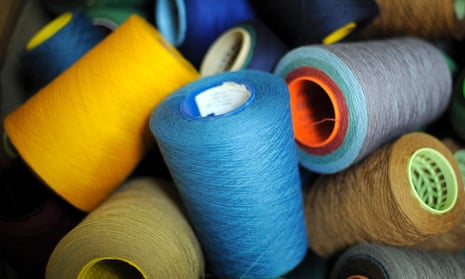Amid the fear and uncertainty surrounding Britain’s post-Brexit future, a spotlight has shone on the imbalance of our economy, its weighting to services over manufacturing. But I believe there are reasons to be optimistic – and especially for the fashion industry, which directly contributed £26bn to the UK economy in 2014.
A former stockbroker, I founded and now manage Rose & Willard, a womenswear brand that is unusual in that we design, manufacture and retail our products from one location in London. Fashion is highly competitive and we now face tough challenges. We have to balance the benefits of a weaker currency, which has stimulated overseas demand, against more costly Italian fabrics. Passing on costs to the customer will be difficult for a discretionary product.I believe opportunity for post-Brexit Britain lies in the structural shift in demand: consumers don’t want to wait six to nine months from fashion week to buy a product. Lengthy global supply chains may soon become unworkable – so brands will have no choice but to produce in the UK.
Politicians need to step in and help manufacturers win back some of the business that has been lost to globalisation, while also helping British brands choose British manufacturing over competitor hubs in Poland, Portugal or Hungary. And luxury brands could drive the change.
In recent years many luxury brands have shifted manufacturing away from traditional manufacturing locations to lower-cost regions. Costs have been stripped from the product and switched into advertising and trophy shops – resulting in high fixed costs. This has happened because the customer base has evolved from the small scale very wealthy luxury customer to the much larger scale more marginal aspirational customer. Scale has become important and, as a result of globalisation, this can only be provided by low-cost, overseas manufacturers.
We use the same luxury fabrics and materials as high-end brands and we manufacture in the UK. But we keep our fixed costs low: our facility is not in a prime location and we have pop-ups rather than expensive shops. This has allowed us to provide an affordable yet high quality product – it can be done and indeed luxury customers may expect their product to be made in a market associated with luxury and quality, such as the UK.
Leave politicians campaigned vociferously on how cutting EU red tape would reduce costs – and as a small business owner I would like to see this happen. But the shutters must not come down on immigration. Eastern European machinists have a wealth of skill and experience that they can pass on to British trainees. Alongside this the government needs to provide vocational training to develop a competitive British workforce.
This needs to start with education in schools so manufacturing jobs are seen as desirable options. My creative team has told me that a garment machinist role was never presented to them as an option when they were considering a career in the fashion industry, and I have struggled to hire apprentice machinists.
Technology investment is also needed. British fabric is high quality but addresses only a small market, mainly men’s formal tailoring. It needs to compete with the luxury of Italian products and the technical performance of Swiss and Japanese materials. I have tried to source from British mills but rarely have found fabrics suitable for modern womenswear.
If British mills could provide the stretch in fabric that is required for professional women’s workwear there would be a ready market.
There is also demand for technical fabrics that can wick away sweat, that are crease-resistant, that feel luxurious but are also washable. We have found such fabrics overseas but none in the UK. The government has facilitated startup loans and seed funds are available – but for businesses to grow from SMEs to large businesses, there needs to be a clear plan. What we don’t need is a sudden and surprising cut to corporation tax when our rate is already globally competitive.
During the daunting time I was setting up my business, a friend said to me: “Don’t be afraid of change.” It was sound advice. Now politicians need now to convince us of that, too.
Sign up to become a member of the Guardian Small Business Network here for more advice, insight and best practice direct to your inbox.

Comments (…)
Sign in or create your Guardian account to join the discussion